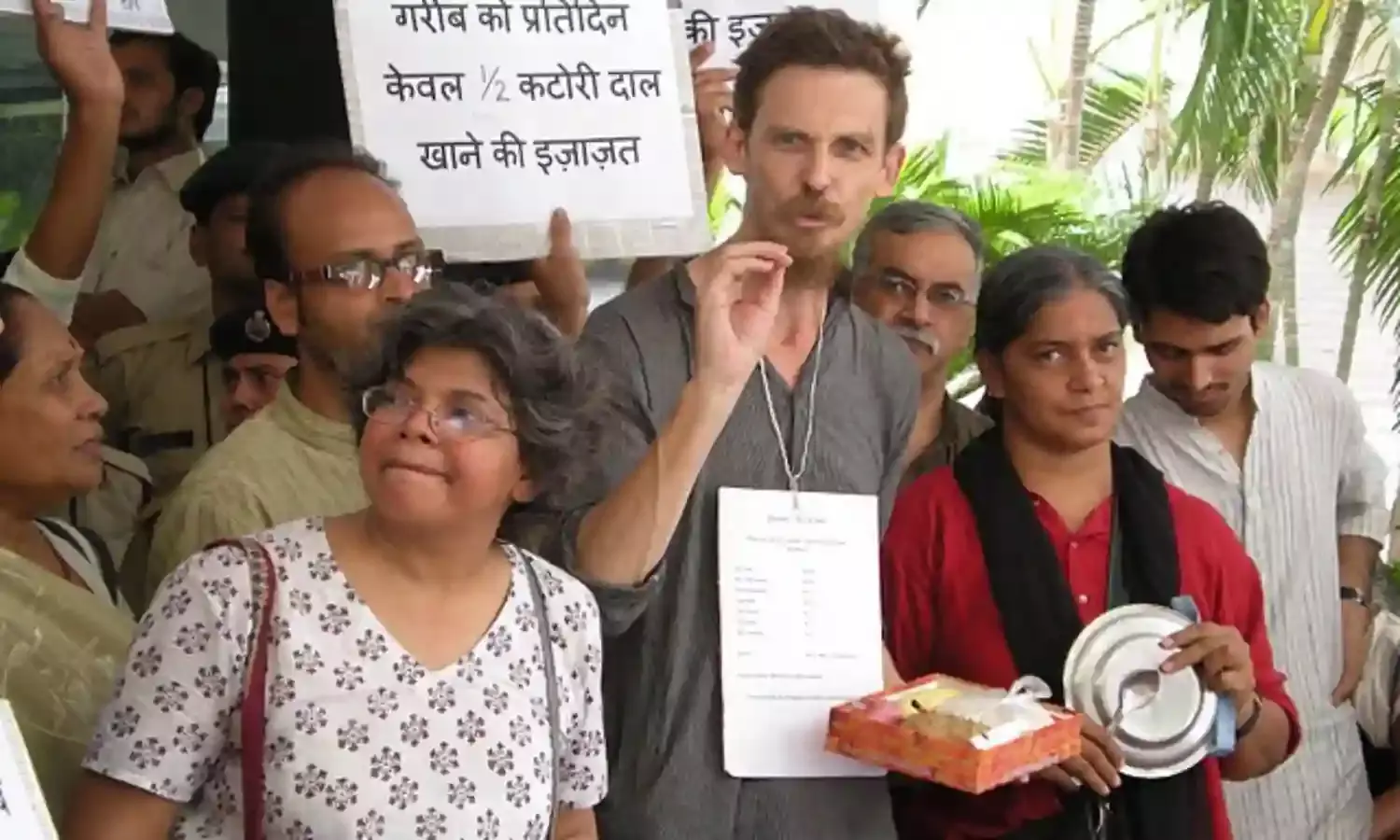Hunger's Appetite: Five Questions for Jean Dr'ze
#TCHasRights - The International Covenant on Economic, Social and Cultural Rights recognises the 'fundamental right to be free from hunger'

With a recent UN World Food Programme report relying on government data to project that a third of Indian children will be stunted by 2022, the 75th year of India’s independence, and the most recent Global Hunger Index showing a steady increase since the 2000s of wasting (low weight for height) among Indian children, along with slow progress in reducing malnourishment and child stunting, we ask Ranchi University economist and right to food activist Jean Drèze why.
Farmers are producing more than ever yet consumers’ affordable access to foodgrains has not increased at the same rate. Why?
Average foodgrain consumption is not a very useful indicator of good nutrition. Of course, it is important to ensure that no-one goes hungry, for instance by strengthening the public distribution system. As far as average foodgrain consumption is concerned, it is close to 500 grams per person per day.
This is compatible with good nutrition, provided that it is supplemented with nutritious food, clean water, health care, elementary education and other inputs. That is where there are still enormous gaps in India today.
In mineral-rich states like Bihar, UP, Jharkhand and Chhattisgarh almost one in two children are stunted, whereas some of these regions are generating the most revenue for public and private businesses. Why?
There is no obvious reason why children should do better or worse in mineral-rich states. If minerals generate government revenue, and the revenue is well used, that could help. On the other hand, mineral resources tend to generate huge corruption, and their extraction often requires displacing people and disrupting their livelihoods.
Other factors, such as education levels, gender relations, wage rates, and public health are likely to be far more important than the possible impact of mining. So there is no reason to expect a clear relation between mineral resources and child nutrition.
India is now facing a double burden of malnutrition - what does it mean for the economy and its people?
Undernutrition and obesity can be seen as two different forms of malnutrition, but it would be a mistake to look at them as two aspects of one problem. In fact, they are largely distinct problems that require distinct solutions.
Of course, there is some overlap between the two. For instance, the spread of junk food contributes to undernutrition as well overnutrition, and so does the lack of nutrition education. But this overlap only accounts for a small part of each problem.
Undernutrition is related to poverty, inadequate food intake, health care, sanitation, gender relations, among other factors. Overnutrition is mainly associated with affluence, unhealthy food, lack of activity and other lifestyle problems.
Correspondingly, the solutions differ widely. A more healthy and diverse diet can certainly contribute to reducing both undernutrition and obesity, but much more is at stake.
Despite the government’s many schemes like Mission Indradhanush, school midday meals, the National Nutrition Mission etc. intended to benefit children, women, SC/ST communities and disabled people, the recent UNWFP report claims that these remain the most vulnerable groups needing special attention, and that anaemia prevalence, for instance, has hardly changed in the last decade among them. Why?
According to the fourth National Family Health Survey, conducted in 2015-16, anaemia has declined significantly among children, though not among adult women.
Looking at nutrition indicators as a whole, the evidence suggests some progress during the ten-year interval that separated the third and fourth National Family Health Surveys, at least compared with the virtual stagnation of the 1990s.
There is no reason for complacency, but things are moving in the right direction at least, and it is likely that some of the initiatives you mention deserve some credit for that.
Indeed, independent evaluations of schemes like midday meals and the Integrated Child Development Services suggest that they do contribute to better child nutrition, even though they could and should contribute much more.
How have Sri Lanka, Myanmar and Bangladesh ranked higher than India on the global hunger index?
This is nothing new. Sri Lanka has been way ahead of India for a very long time in matters of health, education and nutrition. In fact, health and education trends in Sri Lanka have been much the same as in Kerala, which is not an accident since both regions have a history of active social policies.
Bangladesh, for its part, overtook India in matters of child health and nutrition during the last twenty-five years or so. It has a much better record of providing essential health and nutrition services such as sanitation, immunisation, oral rehydration therapy, and so on.
Bangladesh has also done better than India in terms of female education, fertility reduction and a series of other gender-related matters.
India has much to learn from this experience. The problem is that if you are obsessed with becoming a 3 trillion or 5 trillion dollar economy you are unlikely to look to countries like Bangladesh for inspiration.



